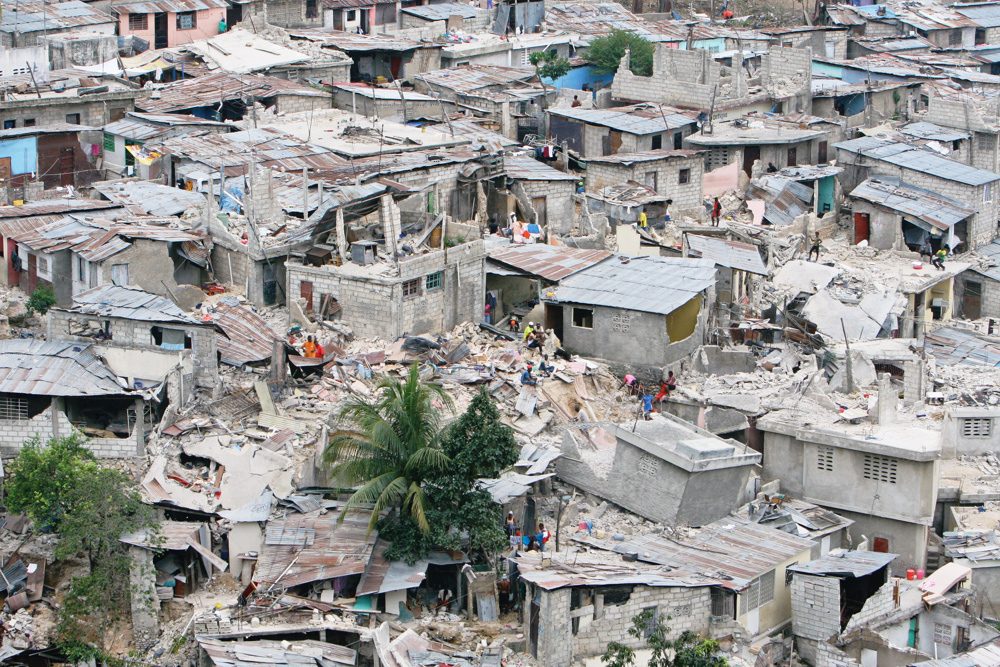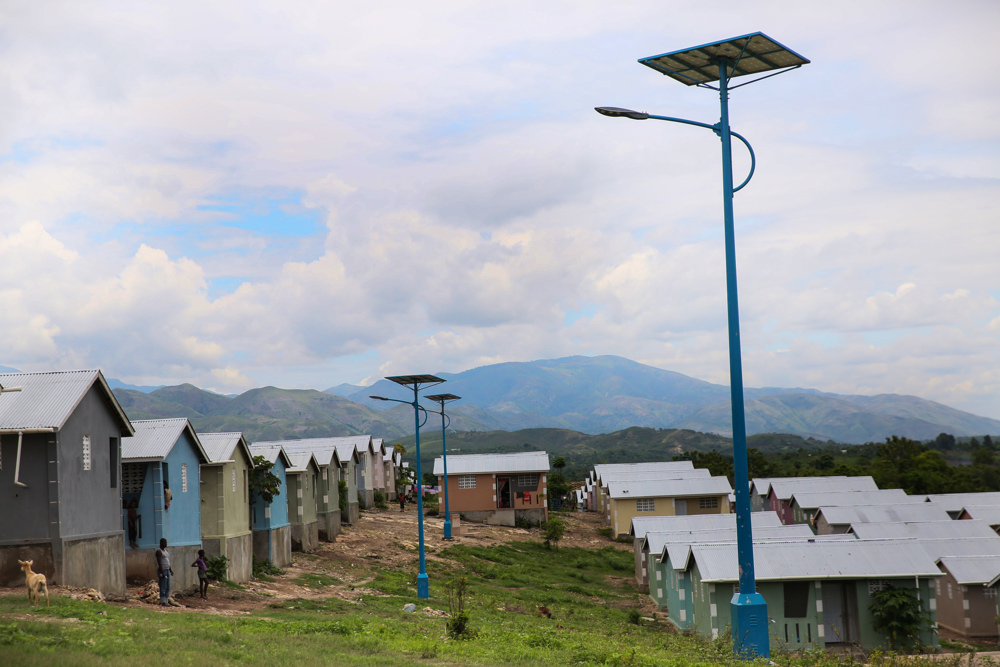

“I lost my father and three sisters, I loved them… I don’t know what I am going to do now, I just don’t know,” were the pain-filled words of an injured young man recorded by a Food For The Poor staff member in Port-au-Prince, Haiti, after a devastating earthquake rocked the Caribbean nation a decade ago.
On Tuesday, Jan. 12, 2010, at 4:53 p.m., a sudden shift in a fault line triggered a catastrophic 7.0 magnitude earthquake near Haiti’s capital, Port-au-Prince. More than 250,000 people were killed that day and an estimated 1.3 million were left homeless.
Twelve students and two faculty advisors from Lynn University, in Boca Raton, Fla., were on a Journey of Hope mission trip with Food For The Poor. Four female students and two professors were killed as the quake caused the hotel where they stayed to collapse.
Food For The Poor Missions & Travel Director Leann Chong was among those trapped. After 17 hours beneath 3 feet of concrete, she was rescued.
Since the earthquake the charity has:

- Built 10,810 permanent two-room concrete block homes with water and sanitation components. Since an average Haiti household consists of six family members, Food For The Poor has provided more than 64,860 people with a secure place to live.
- Installed 168 water filtration units that purify 1,680,000 gallons of water a day.
- Drilled 923 water wells and pumps.
- Built or replaced 64 schools.
- Shipped 11,892 tractor-trailer loads of aid, which include rice, sardines, beans, rice/soy meals, medicine, medical supplies, school and dorm furniture, tiles, shoes, hygiene items, household items, cleaning supplies, and construction supplies.
In 2012, Food For The Poor dedicated the Journey of Hope Memorial Village in Croix-des-Bouquets. The village was dedicated on the second anniversary of the earthquake to honor the legacy of the Lynn University students and professors. The charity built the 42-home community for earthquake survivors.
It has an eight-room primary school that was built with earthquake-resistant materials, and a 10-unit sanitation block. It also has a two-room community center, which is being used for meetings and prayer services. Dozens of fruit trees were planted and a well was drilled to provide clean water.
Food For The Poor-Haiti Executive Director Bishop OgéBeauvoir said he believes with God’s help all things are possible, even with all the past and current setbacks, the people of Haiti will never give up on hope.
“It’s a harsh reality, but the earthquake recovery effort in Haiti has somewhat faded from the world’s memory. The rebuilding continues, but fuel shortages, food insecurity and political protests are what’s front and center,” said Food For The Poor President & Chief Executive Officer Ed Raine.
The outcome of the unknown young man who shared his indescribable grief for his father and three sisters with the Food For The Poor staff member may never be known. What is known is that Food For The Poor donors are committed to help one person, one family at a time.
Religious sisters reflect
Five sisters from as many religious communities reflected with Global Sisters Report on the quake’s 10-year anniversary and legacy. Sr. Judy Dohner, an American Sister of the Humility of Mary, who began to work in Haiti and lived through the quake and the aftermath, put it succinctly:
“The 2010 earthquake added to the hopelessness that mires Haiti. The Haitian people became disillusioned as money poured into the country but without any signs of long-term structural change. The earthquake was followed by a cholera epidemic; several hurricanes and the pulling-out of U.N. forces, leaving many without jobs; and civil unrest that continues to this day. Early on, some progress happened: Tourism improved, there was increased access to phones and the internet. But there was very little done at a structural level to diminish the overwhelming poverty in the country.”
Religious sister of Mercy Marilyn Lacey, executive director of the humanitarian agency Mercy Beyond Borders, had some sobering words about it too. “In my work around the world, I have seen how populations that are repeatedly beaten down — by circumstances, corruption, natural disasters, cultural marginalization or all of those things — tend to live just for today, without much thought or planning or saving for the future. I see it often in refugee populations, and I see it in Haiti.” She continued:
I see Haitians who don’t expect much from this life, so they focus on life after death. Religion becomes central but often is only heaven-focused. This makes development work harder than it needs to be.
Sr. Marilyn Lacey, RSM
Though it was less than a year after the quake, it might also be worth reviewing The Catholic Sun‘s report on the aftermath. J.D. Long-Garcia, editor at the time, traveled to Haiti with Catholic Relief Services in 2010.
Maryknoll Lay Missioner
Maryknoll Lay Missioners continue to serve in Haiti. The newest one was commissioned Dec. 14, 2019. Meet her:
For more of what Haitian life is like today, read reflections from Abby on a Maryknoll and personal blog who is already an established missionary in Haiti. Note, her assignment is a good three hours north of where the quake hit in Port Au Prince.
Be sure to click on the “Education” section of Trinity Missions to see what work the outreach is doing in Haiti.





